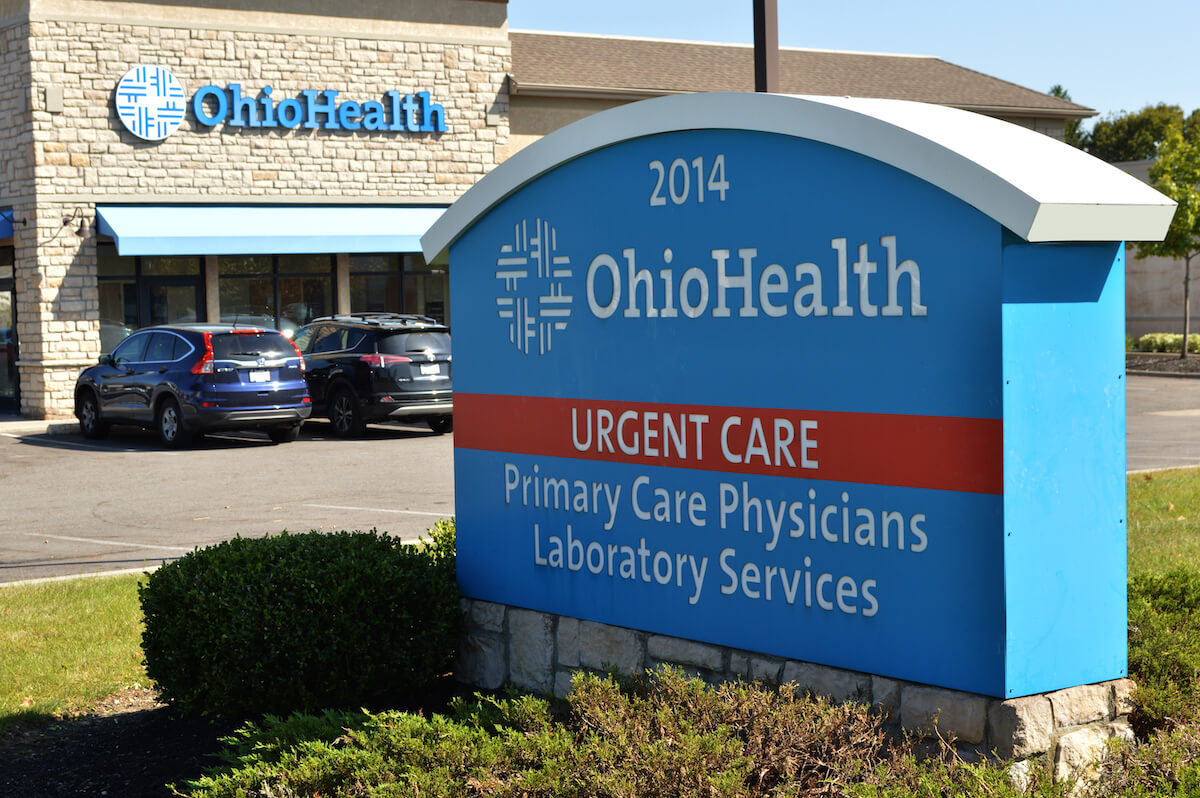February 10, 2020

Lessons Learned: One Health System’s Foray into Service Rationalization
An interview with OhioHealth’s Nikki Ross, System Director of Sterile Processing, on ways service rationalization works in today’s modern health system.
When you pick up your dry cleaning and fill up the car while on the way to the bank on Saturday, you’re not just trying to save time. You’re engaging with what experts call “service rationalization.”
It’s why you buy most of your groceries at one store and bring them home rather than making dozens of trips to the same store or even different stores for your food items with stops at home in between each trip. It’s why you cook most of Thanksgiving dinner at one house rather than parts of the same turkey in different kitchens across three counties.
Those are easy choices to make. Not doing those things in a rationale manner would make your friends and neighbors question your sanity.
Now, think about the complexities of today’s modern health systems. All those acute-care hospitals. All those units within all those acute-care hospitals. All those clinicians working in all those units in all those acute-care hospitals. All those ambulatory surgery centers, outpatient clinics, affiliated medical practices and outpatient pharmacies. And all spread over a wide geographic market if not across state lines.
How would service rationalization work at today’s modern health system? Where would you even start? It’s infinitely more complicated than making two extra stops on the way to the bank.
But, it’s a question that forward-looking health systems are asking themselves as the pressure to reduce operating costs and improve patient care continues to build. The tolerance for waste and inefficiency is gone, especially if that waste and inefficiency isn’t being offset by better outcomes. Today’s healthcare customer wants more for less, not more for more and certainly not less for more.

Nikki Ross, System Director, Sterile Processing, OhioHealth
I had an opportunity recently to talk to Nikki Ross, System Director of Sterile Processing at OhioHealth, about service rationalization. OhioHealth is a not-for-profit health system based in Columbus, Ohio. It operates 12 acute-care hospitals and more than 200 outpatient sites, hospice, home health, medical equipment and other health care services over a 47-county area.
OhioHealth is the definition of today’s modern health system. And it’s turning to service rationalization as the means to create more value for patients and for payers. I asked Nikki a few questions about what OhioHealth is doing and why. Here’s what she had to say.
4sight Health: What interests OhioHealth in service rationalization?
Ross: One of our strategic goals as a system is to reduce our expenses. We know healthcare has gotten unaffordable for almost everyone. If we can lower our costs, we can make our services more affordable for our patients. We think service rationalization gives us the best chance of lowering our operating costs.
4sight Health: What makes service rationalization an effective strategy to lower operating costs?
Ross: Service rationalization really targets the things that drive a health system’s costs higher without any real benefit to patients. It identifies and eliminates redundant tasks. And it identifies and centralizes low-volume tasks performed at many locations to one or just a few locations.
4sight Health: That sounds a lot like the “economies of scale” argument that many hospitals and health systems use to justify their mergers and acquisition. Why don’t more hospitals and health system do it?
Ross: Most people who run and work in health systems aren’t logistics experts. They don’t want to be logistics experts. They’re in the business of taking care of patients the way they’ve always taken care of them. Most don’t have the time or interest in making what they do more efficient. But that’s changing because of the cost pressure. People are looking at their processes to make them more efficient in order to lower the costs of providing care to patients. That’s what we want to do at OhioHealth.
4sight Health: Did you do that by yourself or did you have outside help?
Ross: We have outside help. We began working with a company called MedSpeed in 2013. They’re based in Elmhurst, Ill., in your neck of the woods. They specialize in what they call intra-company logistics. For a health system like OhioHealth, intra-company logistics means moving drugs, pharmaceutical supplies, medical supplies and medical equipment from one place to another within all the different parts of a health system.
4sight Health: How do you work with MedSpeed on service rationalization?
Ross: We started with a more traditional vendor relationship. We need this and you do it. But over time we enhanced and expanded our governance and blurred the lines more between the two organizations. Now we both bring ideas to the table. We talk about them. We prioritize them. And then we work together to get those ideas executed.
4sight Health: What service rationalization projects have you tackled so far?
Ross: The big one so far has been our delivery trucks that transport drugs, lab specimens and medical equipment and supplies to every nook and cranny of our health system. We owned our own trucks. We had redundant routes. We had near-empty trucks making deliveries. We had near-empty trucks making deliveries at the same time to the same place. It was like two trucks making Amazon deliveries to your home five minutes apart and you scratching your head why. Now, MedSpeed provides the trucks. We reduced the number of routes. Trucks are full. They’re always on deliveries and not sitting idle. And delivery times are much better.
4sight Health: Other than saving time and money, what other benefits accrue to OhioHealth?
Ross: The benefits accrue to our caregivers and our patients. It’s all about getting the right products in the right quantity to the right place at the right time. That gives our doctors and nurses and staff what they need to provide the best possible care to our patients.
4sight Health: What other service rationalization projects are you pursuing?
Ross: The other big one is the sterile processing of medical instruments used in surgery and in other procedures. Every site and every unit in our system that did any type of surgical procedure had its own sterile processing equipment. Now we have what we call “mini hubs” where we sterilize equipment at centralized locations for multiple sites. That change really was driven by low volume. Why have all this expensive sterilization and reprocessing equipment at every site even if you’re doing just a handful of procedures? You have to store it. You have to maintain it. You have to have it inspected. With our new delivery capabilities, we can get sterilized instruments from one of our mini hubs to any location. My dream is to have just one sterile processing facility for the entire system.

4sight Health: What attracts you to service rationalization?
Ross: I scrubbed in for surgery as an OR tech for 25 years. I’m all about streamlining processes.
4sight Health: What’s the biggest barrier to service rationalization at a health system?
Ross: The biggest barrier is culture. Everyone knows people are resistant to change. That’s the route we always drive. That’s the way we always sterilized surgical trays. After you show people a better way, then it becomes why isn’t this working perfectly immediately? Impatience replaces resistance. You’re going to make mistakes as you go through this. Some things will work. Other won’t. But if you stick with it and are flexible and are willing to adjust along the way, service rationalization will get your hospital or health system where it needs to go.
4sight Health: What one piece of advice would you give a health system that wants to go down the path of service rationalization to drive more value for patients?
Ross: You don’t realize how one thing, whether it’s a lab specimen or surgical tray or whatever, touches so many different people and departments within a big hospital or health system. You have to identify all the people and departments that touch whatever you’re trying to rationalize and engage them in the service rationalization project from the start. Get their input. Get their buy in. If you don’t, and if they find out later that you’re trying to change a process that they’ve grown accustomed to, you’re in for an uphill battle.
I’d like to thank Nikki for sharing her insights with our 4sight Health audience. And some day I’d like to run a few weekend errands with her to see how a professional does it.
To learn more on this topic, please read “Win-Win Partnerships Strategics and Sponsors Increasingly Team Up” on www.4sighthealth.com.





